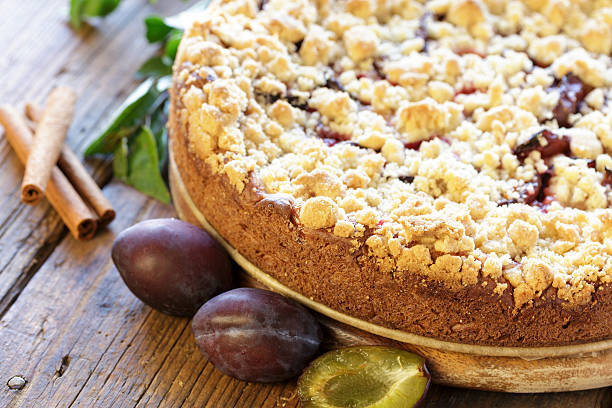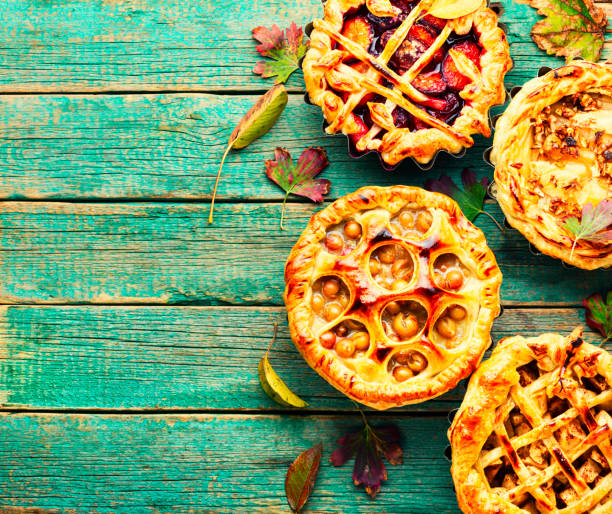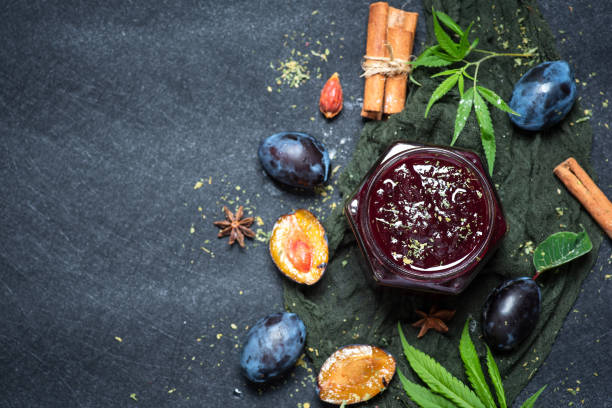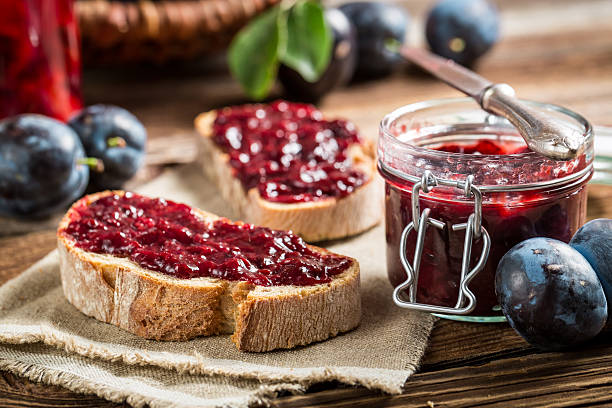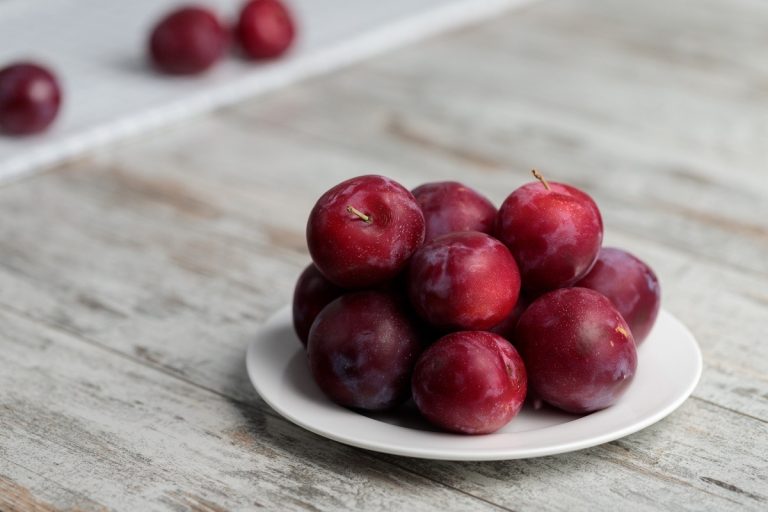Chutneys are a fine thing: they give cheese, meat, and savory bread that certain sweet and sour note. A great chutney can also be conjured up from plums. Today we will show you how to make your own plum chutney with a little ginger spiciness.
Plum cake, plum compote, plum jam: the variety is great when it comes to processing fresh plums. Try this fine plum chutney!
The mild sweetness of the ripe plums harmonizes wonderfully with chili, ginger, and onions. The chutney is also a hit as a lovely souvenir from your own kitchen.

Make plum chutney yourself: the ingredients
- 150g shallots
- 1 piece of ginger root (approx. 20 g)
- 1 red chili pepper
- 2 oranges (1 of them organic)
- 3 anise stars
- 500 grams of ripe plums
- 50 grams of brown sugar
- Salt
- 1 tbsp balsamic vinegar (a little more if necessary)
Make plum chutney yourself: preparation

- Rinse the screw-top jars (for a total of 750 ml content) with the fitting lids with boiling water and drain them upside down on a kitchen towel. Peel shallots, halve, and cut into fine wedges. Ginger peel and finely chop.
- Cut the chili pepper lengthwise, deseed, rinse and cut crosswise into thin strips.
- Wash the organic orange in hot water, rub dry and peel half thinly with a vegetable peeler. Cut the orange zest crosswise into very fine strips.
- Halve both oranges, squeeze and measure out 200 ml of juice. Bring the orange juice to a boil in a saucepan with the shallots, ginger, chili, strips of orange peel, and anise stars. Cover and cook on low heat for 15 minutes.
- Meanwhile, wash the plums, drain, halve, stone, and cut into thin wedges.
- Add the plums and sugar to the shallots, bring to the boil again, and cook covered over low heat for another 10 minutes. Remove anise stars.
- Season the chutney with salt and vinegar and pour immediately into the prepared glasses. Seal, flip and let stand upside down for 5 minutes. Turn the glasses over again and let them cool down. Closed and stored in the dark, the chutney will keep for about 2 months.
Enjoy your meal!

